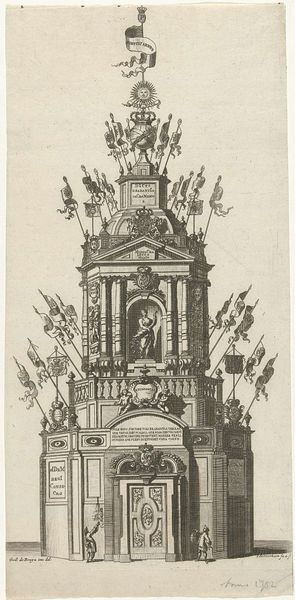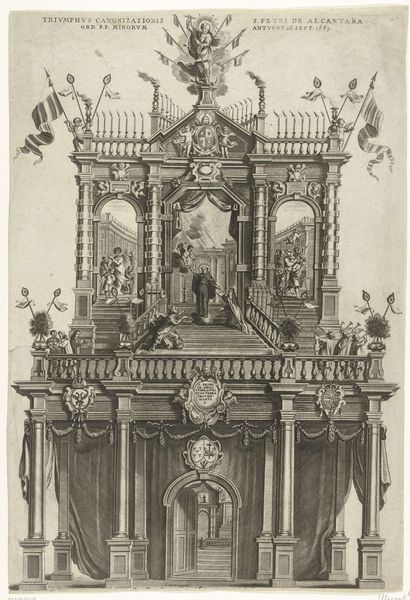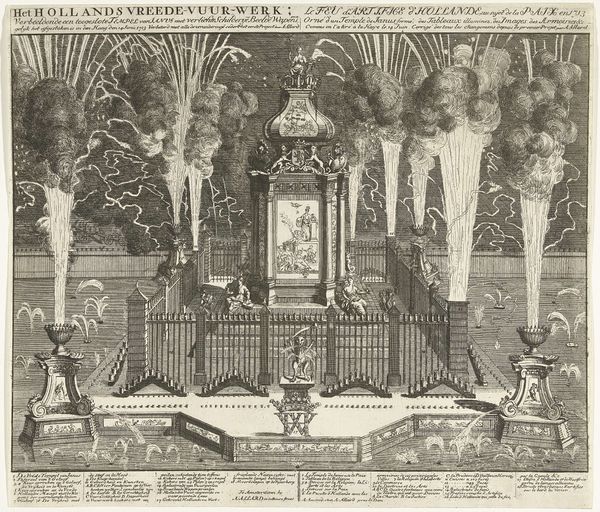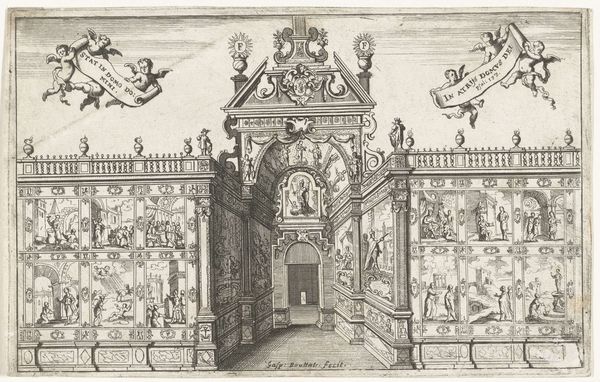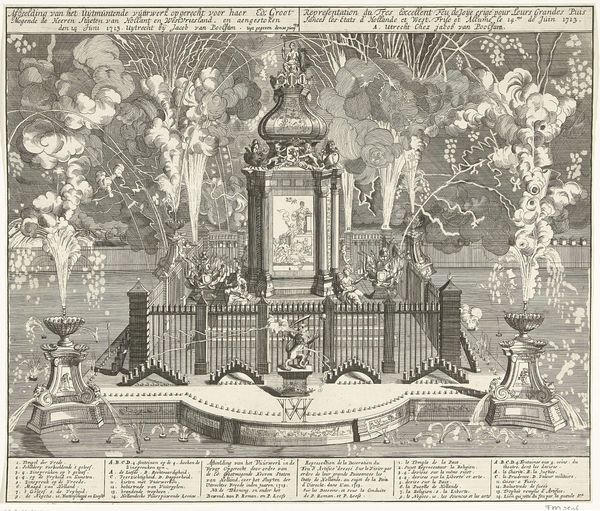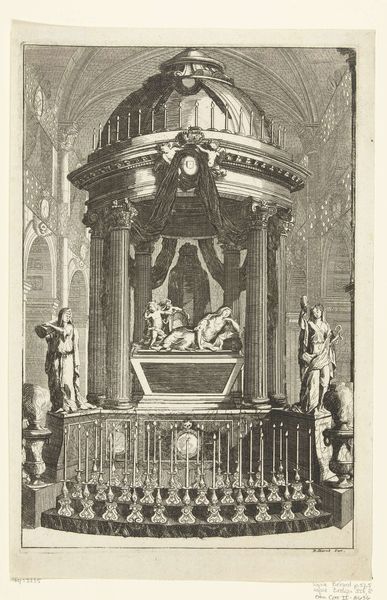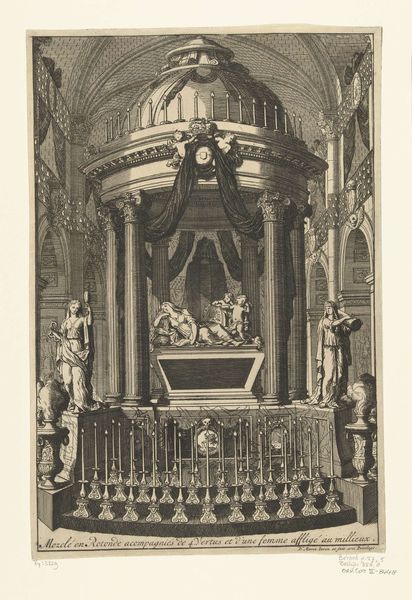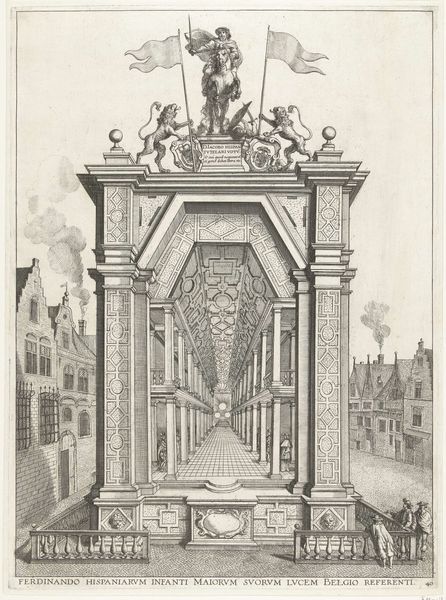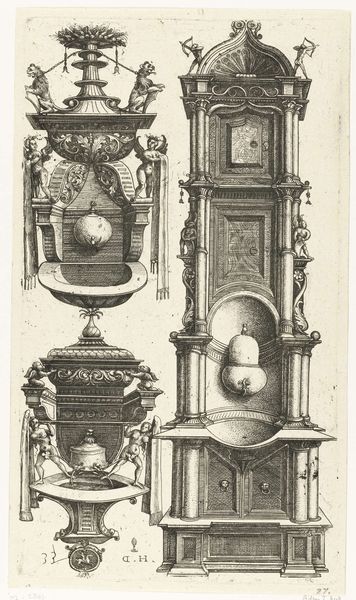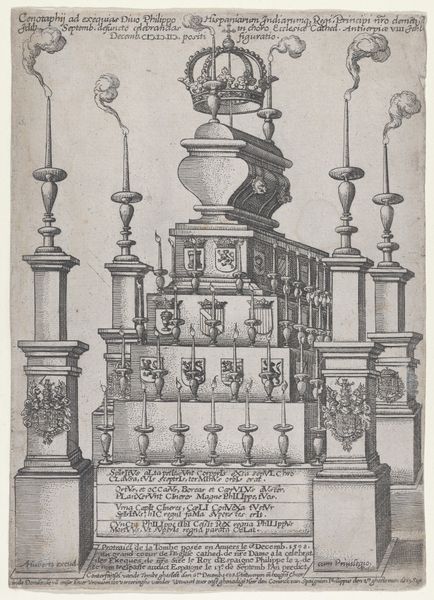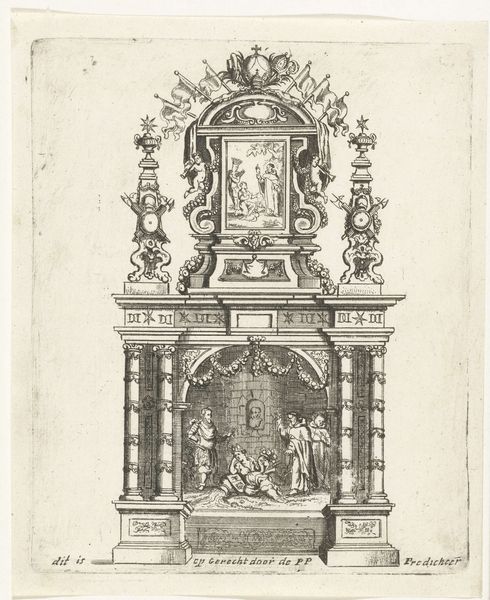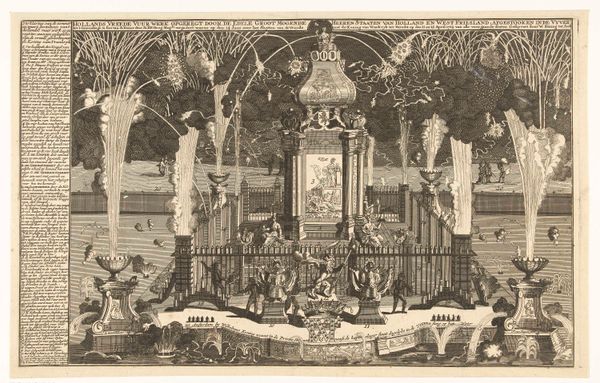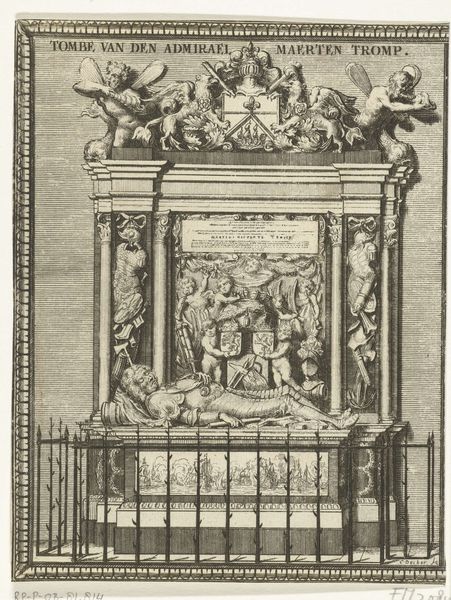
print, engraving, architecture
#
baroque
# print
#
old engraving style
#
engraving
#
architecture
Dimensions: height 750 mm, width 405 mm
Copyright: Rijks Museum: Open Domain
Curator: This engraving from around 1700, titled "Kabinet met vitrine met een tuin", showcases a cabinet with a display case containing a garden. Its composition immediately strikes me as remarkably complex. What are your first impressions? Editor: I see such intricate detail. It feels opulent, almost overwhelmingly so. The Baroque style is evident in every swirl and flourish. One cannot help but wonder what political statement this garden exhibit conveys given the historical era of opulent royal display and growing class tensions? Curator: That is interesting. Consider the structure itself: the cabinet is elevated, supported by ornately carved legs with cherubic figures. A miniature city resides within a glass display. Above the city sits a clock, and then the peak which is some statuary! It functions almost like a microcosm. This wasn't merely decorative; it served as a status symbol, a tangible demonstration of power. What narratives might these objects and composition signify to the Dutch merchant class? Editor: Absolutely. Its symbolic power is undeniable, and the act of enclosure itself seems significant, doesn't it? Is this a celebration or a form of controlled surveillance over one’s realm and dominion? What I find compelling are the gender and identity dynamics that it signals. In the domestic sphere, spaces for women and family within these controlled miniature worlds often highlight the restrictive status of gender. Curator: Very interesting idea; I was still examining the craftsmanship in relation to mathematical harmonies evident within baroque structures. Notice the engraver’s command of perspective. See the scale of detail in the model gardens within compared to the carved ornament beneath! It is visually captivating, and, dare I say it, mathematically stimulating? Editor: Of course. Yet that precision serves the larger ideology. Such displays of manufactured paradise would become viewed critically, with their implicit links to colonial power and the extraction of wealth. What we admire as skill becomes further implicated and recontextualized as society begins to transform under democratic ideas. Curator: A good reminder of art's evolving meaning. It serves to encourage a multifaceted appreciation of this object’s inherent form and more complex social significance within contemporary art practice and historical criticism. Editor: Agreed. The more we view these details, the richer and the more relevant its layered meaning becomes.
Comments
No comments
Be the first to comment and join the conversation on the ultimate creative platform.
